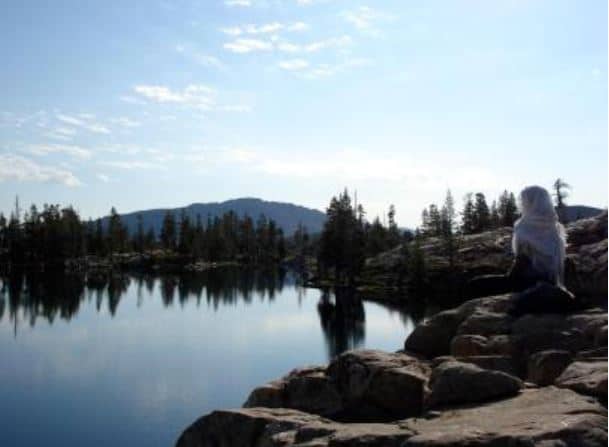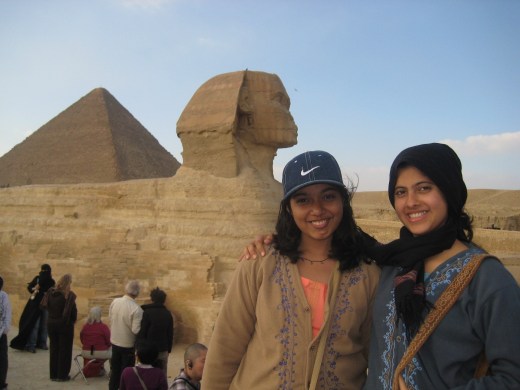
The Age of Energy Generation: Generation Z
As the world witnesses the newest generation of young adults known as Generation Z transition into college and adulthood, dynamic ways of relating to oneself and the broader world are emerging. Paramhansa Yogananda’s call for small communities, simplistic living and the pursuit of God are now more relevant than ever, particularly with this generation.
Small, intentional, cooperative communities are an obvious way of bringing about needed changes in the world. Paramhansa Yogananda
In 1894 Swami Sri Yukteswar elucidated these changes in his divinely inspired book The Holy Science. He foretold of Dwapara Yuga as a time of global realization. He stated that energy underlies all material reality and that we, both collectively and as individuals, have the ability to harness these finer electricities. In the dawning awareness of this new age, rigid and long-standing forms give way to fluid and emergent ways of being.
As an educator for over twenty years, many of those years at the college and university level, I’ve witnessed countless examples of Yukteswar’s predictions coming true. Lectures can now be transmitted across the world in real-time. Hundreds of databases offer thousands of academic articles within seconds. Meditation and yoga classes are provided as necessary student services. Courses in Quantum Physics and Consciousness Studies are now popular offerings for undergraduates. In fact, Yale’s most popular course (ever) is entitled Psychology and the Good Life, a class that explores how to be happy.
It is no wonder then that Generation Z is actively seeking alternative ways of making a place in the world. Already they are architects of creative housing structures, crafters of ingenious sustainable food systems and instigators of radical economic exchanges, not to mention being pioneers in digital pursuits.
When today’s young adults couple “material efficiency,” as Yogananda would state, with spiritual inclinations, they can be described as metaphysical nomads, zigzagging the globe in search of divine guidance. Put very simply, this is the Age of Energy generation.
How then can higher education rise to the meet these illumined souls? Fortunately, the great Masters of Self-realization, and Swami Kriyananda, as well, have provided practical and spiritualized answers to this question.
First and foremost, Paramhansa Yogananda advocated in his “How-to-Live-School” in Ranchi, India, established in 1917, that all learning must be underpinned by spiritual principles such as control of one’s energy, harmonious relationships with others and enthusiasm in all endeavors. These precepts are universal for all studious souls, be they eight or 28 years of age. Yet such values are often missing from college course syllabi and dormitory rules.
I’ve witnessed my students’ growing interests via intellectual forays into both ancient wisdom traditions and contemporary philosophies of consciousness. However, they don’t just want to think about these concepts but desire to personally experience the esoteric teachings and put them into action.
Therefore, coupling spiritual theory with structured spiritual experiences through practices such as meditation, yoga postures and community living, students ultimately land on what they’ve secretly been searching for, inner guidance on How-to-Live.
Simple Living and High Thinking
Yogananda also strongly emphasized the need for Simple Living and High Thinking as we transition more fully into this new age. Swami Kriyananda actualized this urging through his established models of efficient and purposeful spiritual communities.
In many ways, this Age of Energy Generation has already forged ahead with its own versions of this principle. Builders of tiny-homes and diners on sustainable food, goods are locally sourced and everything from artisan cheeses to melodic fiddles is handcrafted. Such systems often do more with less and there’s an endeavor to work in reciprocity with the earth and all of its inhabitants.
Transitioning from large industrialized complexes of higher education to sustainable and simple places of learning and living aligns well with emerging values of this new generation. Small class sizes and personal relationships with teachers and peers allow for flexible systems that shift in accordance with scholars’ unique dispositions and spiritual leanings. In such environments students are able to relax into their authentic selves, breathing more deeply and pondering more expansively, becoming awake and ready to grow.
I often lead field-based courses in which my college students and I camp out in tents, surrounded by our subjects: plants, rocks, birds and human relationships. We cook humble meals and spend starry evenings contemplating the big questions of life. Our library is stashed in our backpacks. Here, people are notably happier and even more studious than back on campus where there’s access to every imaginable amenity. In a sane and simple natural environment, scholars’ spirits are highly energized and their intellects roam freely.
Every kind of human activity manifests a magnetism of its own. For success in each activity type, the most important requirement is that one develops the appropriate type of magnetism.Swami Kriyananda
Simple Living education is more than just a backdrop for learning. Higher education that experientially teaches sustainable practices (like biodynamic farming, vegetarian cooking and energy-efficient building) meets practical needs of our planet and finds superconscious solutions to contemporary challenges. In this mode, people also naturally learn focus, hard work, and joyful service. These are invaluable life skills that also happen to be critical employment skills.
In the latter part of his life, when Swami Kriyananda was asked what Ananda College ought to teach to its students, he firmly stated “Attunement,” and “Magnetism.” Both attunement and magnetism depend on a growing awareness of how energy animates all aspects of our lives, from our physical bodies to our most intimate relationships.
Dwapara Education
Curriculums that offer a balanced and holistic approach, with subjects and areas of study such as Expressive Arts, Quantum Sciences, Ecology, Conscious Entrepreneurship, healing modalities, and compassionate leadership, open multiple doorways to greater energy awareness. Daily community-living provides unique leadership opportunities for learners to utilize both will power and collaboration. Further, experiential opportunities such as travels to new lands and cultures, as we will do in the New Horizons Gap Year at Ananda College, reveal infinite ways that consciousness manifests.

In each learning pathway, students tune into surrounding environments, realities of others, and their own inner landscapes. This balanced approach inspires growth to become seasoned leaders and actualized adults, magnetizing what is truly needed in each moment. In essence, we’re learning how to be in sync with the Divine, drawing on an infinite source that is aiding in every step of unfolding development.
Helping to guide the Age of Energy Generation toward ever-increasing Self-realization is a unique venture — one that, if in attunement with the highest truths, will prepare us to joyfully usher in the higher age of consciousness, an endeavor already begun by many youth.

5 Comments
Excellent article. Thank you Laura.
Well done Laura! Very insightful and relevant for today’s educators.
Thank you very much, Laura! How valuable it is to hear described the teachings that all serious students of spiritual growth need to hear. It is a confirmation by one who is out in the academic world as well as an astute observer of our youth. You not only help those who are not in education at the moment, but recognize how today’s young people are an extension of what many of us yearned for and tried to bring into existence in the 60’s and 70 — over 50 years ago.
It’s wonderful to learn how Gen Z is ripe for “taking the ball and running with it.” Thank you for your article, Laura.
Thank you Laura for this excellent and very inspiring article. And thank you for defining “Z” as “Age of Energy Generation,” a plus for us and for them in affirmation, joyous expectation of possibilities and actualities. It’s a very exciting movie to watch and be a part of. Blessings on this adventure and your service in this way. joy, maria